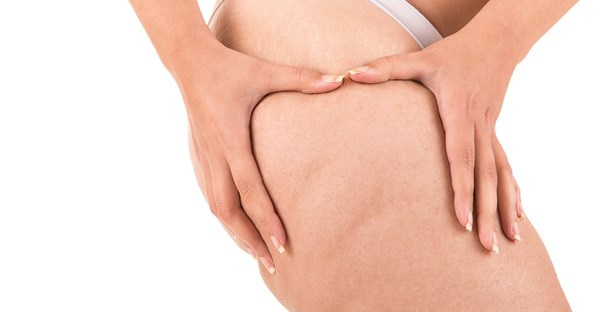Cellulite is a condition that occurs when fat collects just below the surface of the skin, leaving it with unsightly bumps. While it is typically not a cause for concern, many people find it unappealing by cosmetic standards, and because of this, an entire industry has been built around its removal. Here is a brief overview of cellulite, including its symptoms, causes, risks, and treatments.
What does cellulite look like?
Cellulite gives the skin a dimpled and wrinkly appearance. While it is no different than the other fat found in the body, its location causes it to push against the connective tissue found in the skin, which is responsible for its trademark appearance. Cellulite most commonly appears in the thighs, buttocks, and hips, but it may sometimes be visible on the upper abdomen as well. Additionally, it’s typically more often found on women than men.
Is cellulite dangerous?
There is currently no research to indicate that cellulite poses any sort of medical risk to those that have it. Some people assume that its presence is an indication of obesity, but people of all sizes have been known to develop it—it’s more about the position of the fat than the quantity of it.
What causes cellulite?
There are a number of factors that can influence the development of cellulite, and many times it occurs because of a combination of things, as opposed to one singular cause. Some common causes include:
- A family history of cellulite (especially among female relatives)
- An unhealthy diet
- A lack of physical activity
- Hormonal changes during adolescence and menopause
- The texture and thickness of a person’s skin
- An inefficient metabolism
What are effective ways of treating cellulite?
For people who are overweight, weight loss is probably the best course of action for treating this condition. In addition to restricting their caloric intake to help burn fat, patients should also focus on strength training exercises that can improve the tone and appearance of muscles in the lower torso—such as squats, lunges, and leg lifts. However, patients within a healthy weight range may not see much success with this approach.
There are a number of over-the-counter creams available for treating cellulite, but most people find these offer only mixed results. When choosing a cream, it’s best to go for one that contains retinol, which is a form of vitamin A responsible for promoting skin health. Studies have shown that patients who use products containing it notice a visible improvement in their cellulite after six months.
What are ineffective ways of treating cellulite?
The amount of products available that claim to help reduce or even eliminate the presence of cellulite are too numerous to count. However, consumers should exercise caution and do their research, because many of these items are not actually as effective as they claim to be.
In fact, some treatments can actually make the appearance of cellulite even worse. For example, some people turn to liposuction to reduce the amount of fat in their legs and thighs. However, this procedure targets the deeper layers of fat and leaves the offending layers near the skin untouched. This has been known to intensify the appearance of wrinkles and dimples associated with cellulite.
Products like body wraps may improve the appearance of cellulite for a short period of time, but the results diminish quickly. Additionally, body wraps can leave the skin dehydrated, which can actually make cellulite worse over time.



